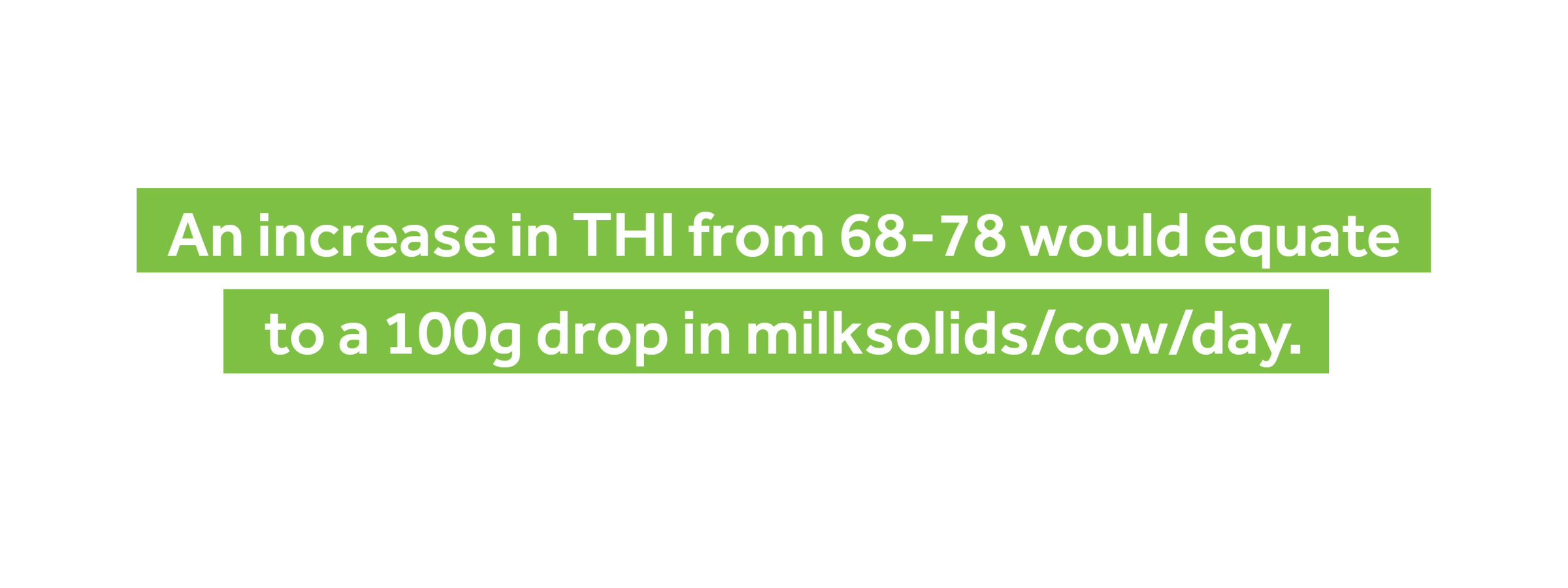HEAT STRESS
Heat stress occurs when an animal's heat load is greater than its capacity to lose heat. Cows feel hot sooner than we do. High air temperature, humidity, solar radiation and low air movement contribute to increased risk.
When cows are too hot, they change their behaviour to try to cool down, this often has an impact on production as they spend less time eating and ruminating. Heat-stress can also increase their risk of lameness and incidence of disease, and affect reproduction as well as impacts welfare.
Identifying risk
To determine whether conditions are warm enough to cause heat stress in New Zealand we commonly use the Temperature Humidity Index (THI). A calculator can be found on the DairyNZ website here.
When THI reaches 68 for Friesians, 69 for Cross breeds and 75 for Jerseys (equivalent to 21, 21.5 and 25.5°C respectively at 75% relative humidity) New Zealand cows begin to reduce feed intake and drop around 10g milksolids per day per unit increase in THI.

The first sign of heat distress is clustering around the water trough or in groups, trying to get shade from each other. Other signs include reduced production, drooling, panting and irritability. Breathing faster than usual is a good indication, take note if cows are breathing above one breath per second.
How to improve?
Many dairy farmers use multiple practices to help their cows manage their body temperature in hot, humid and sunny weather. Some options to consider include:
- Ensure adequate shade and ventilation.
- Ensure adequate amounts of clean drinking water.
- Reduce walking distance and speed.
- Adjust milking times.
- Assess feed types and timing.
- Implement active cooling in the yard with sprinklers and fans and ensure adequate space.
Talk to your veterinarian about developing and implementing the most effective and appropriate heat mitigation strategies for your farm.
